Eastern Red Oak
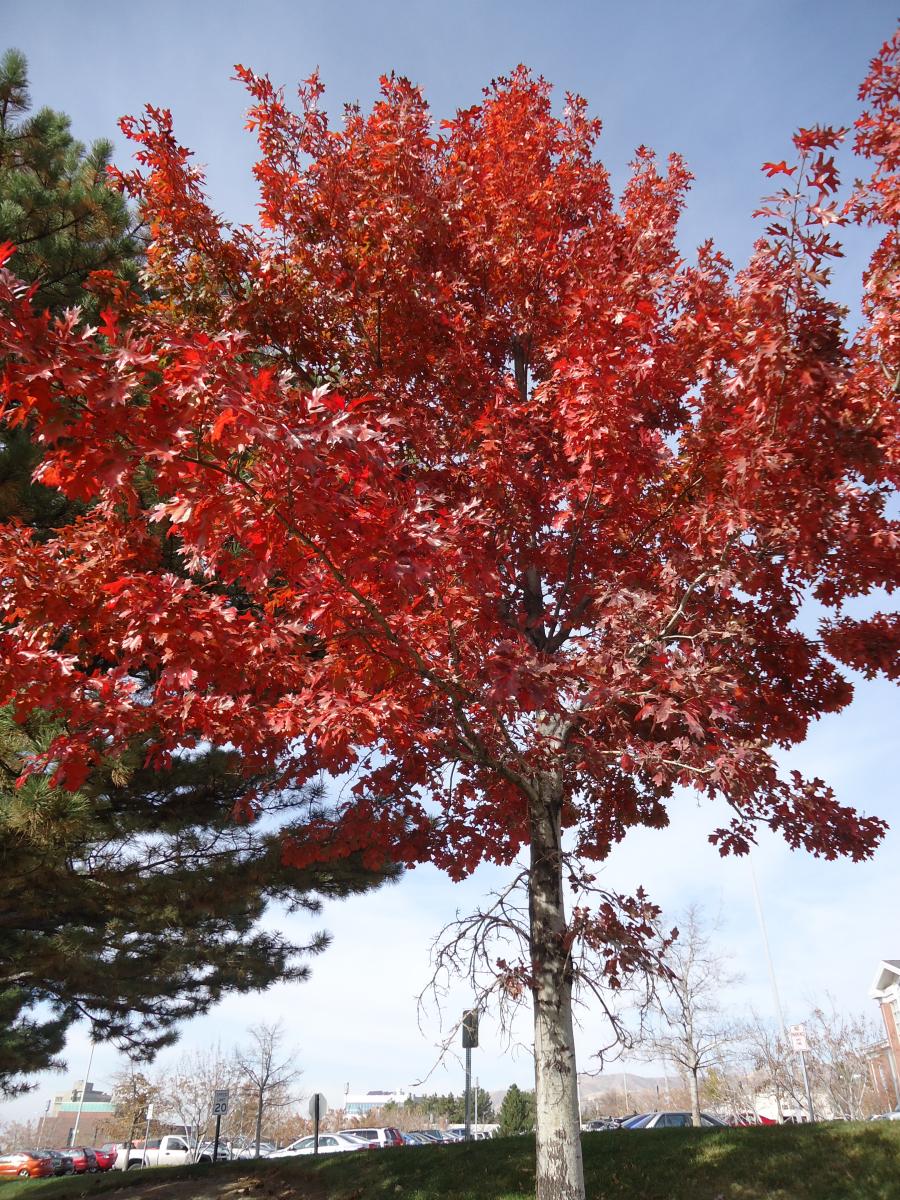
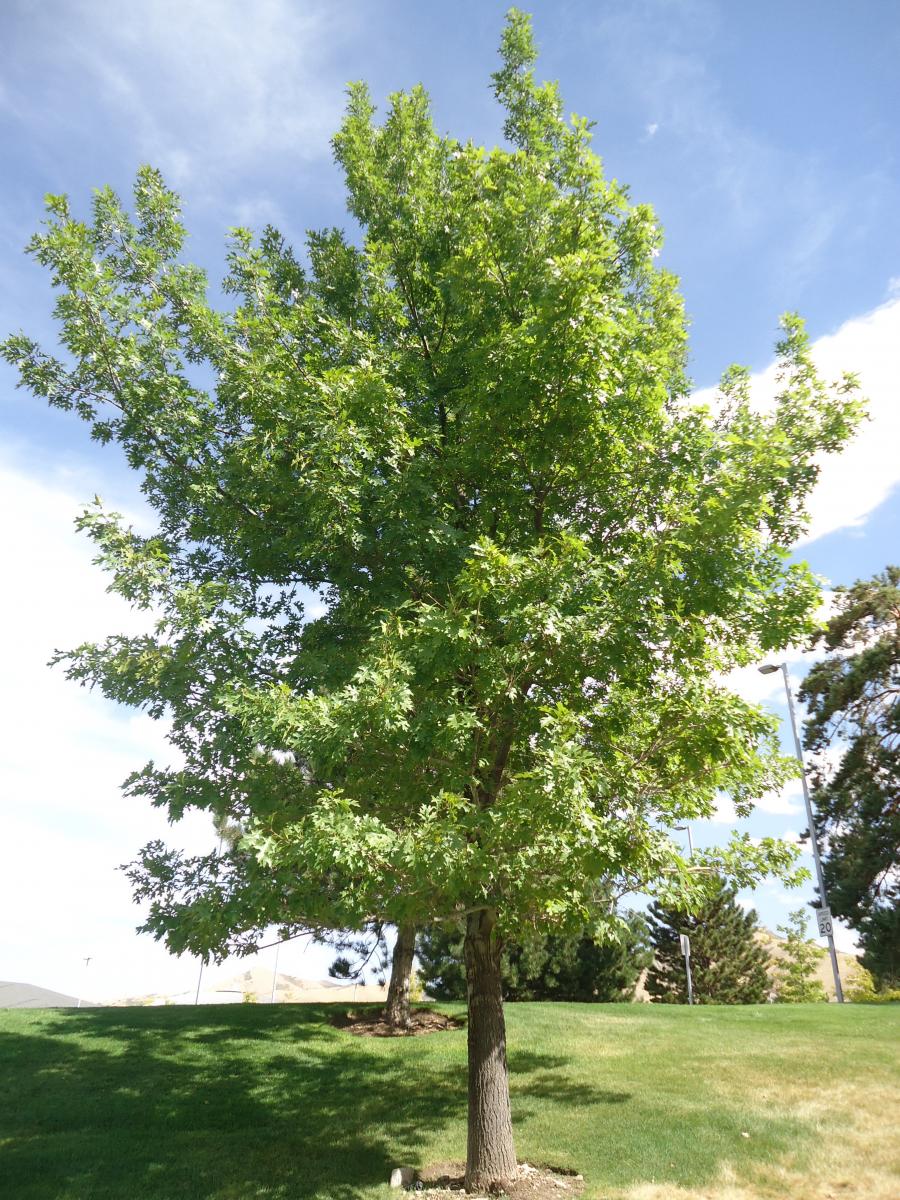
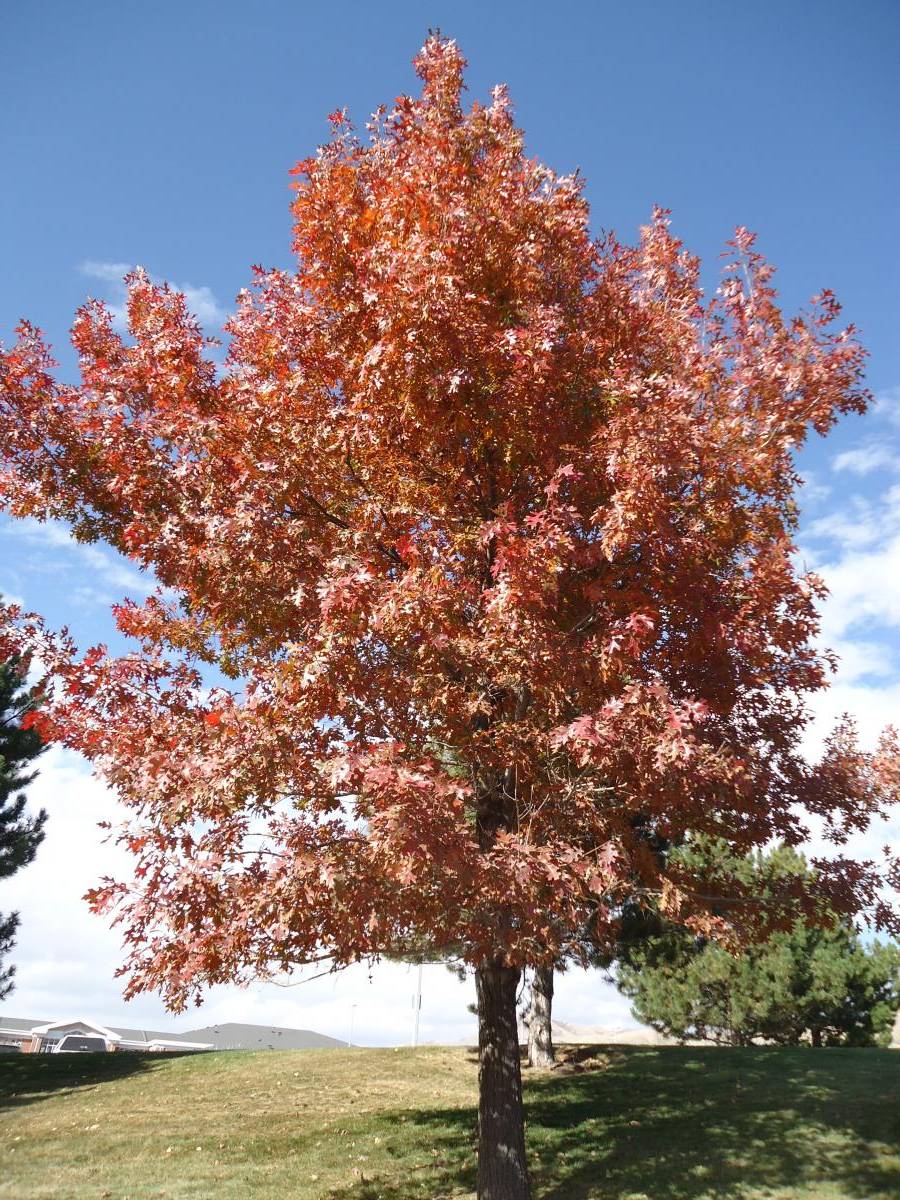
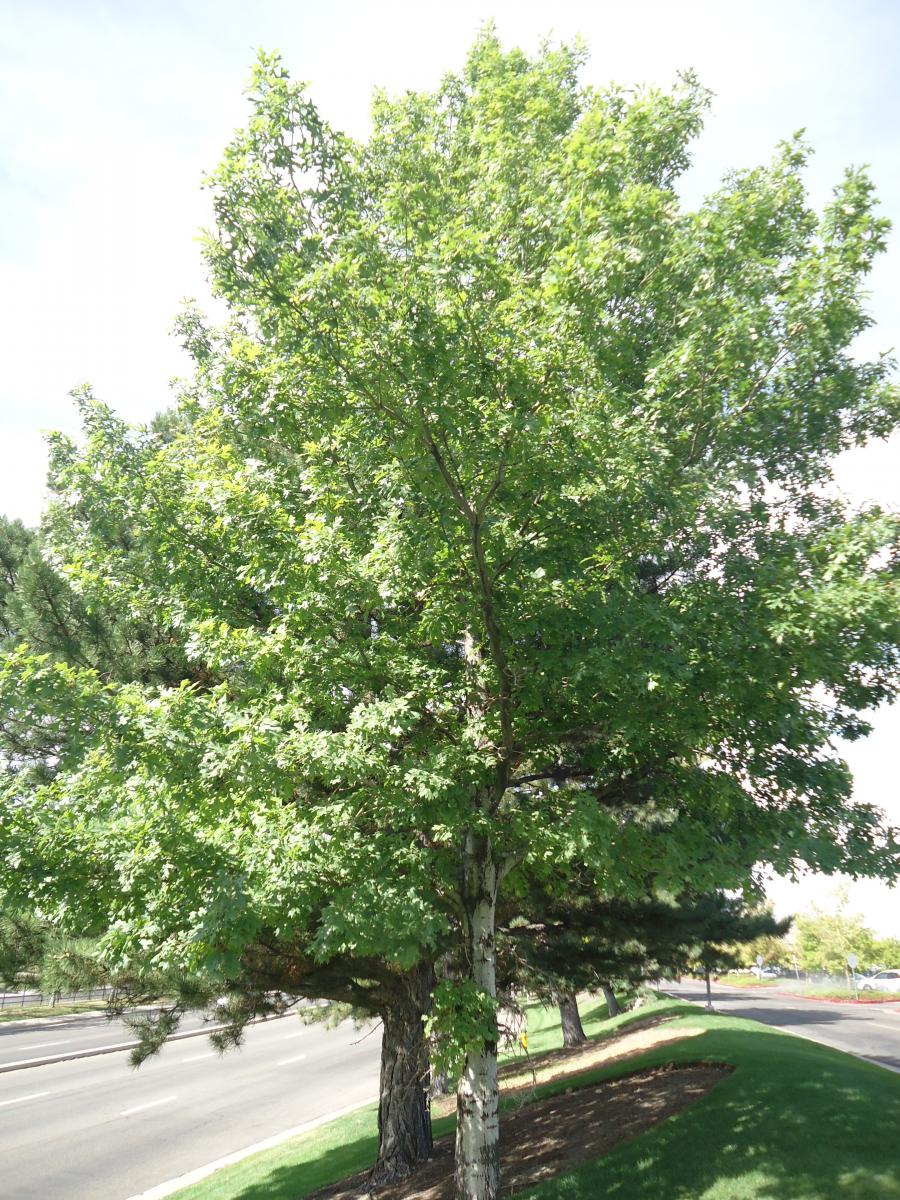
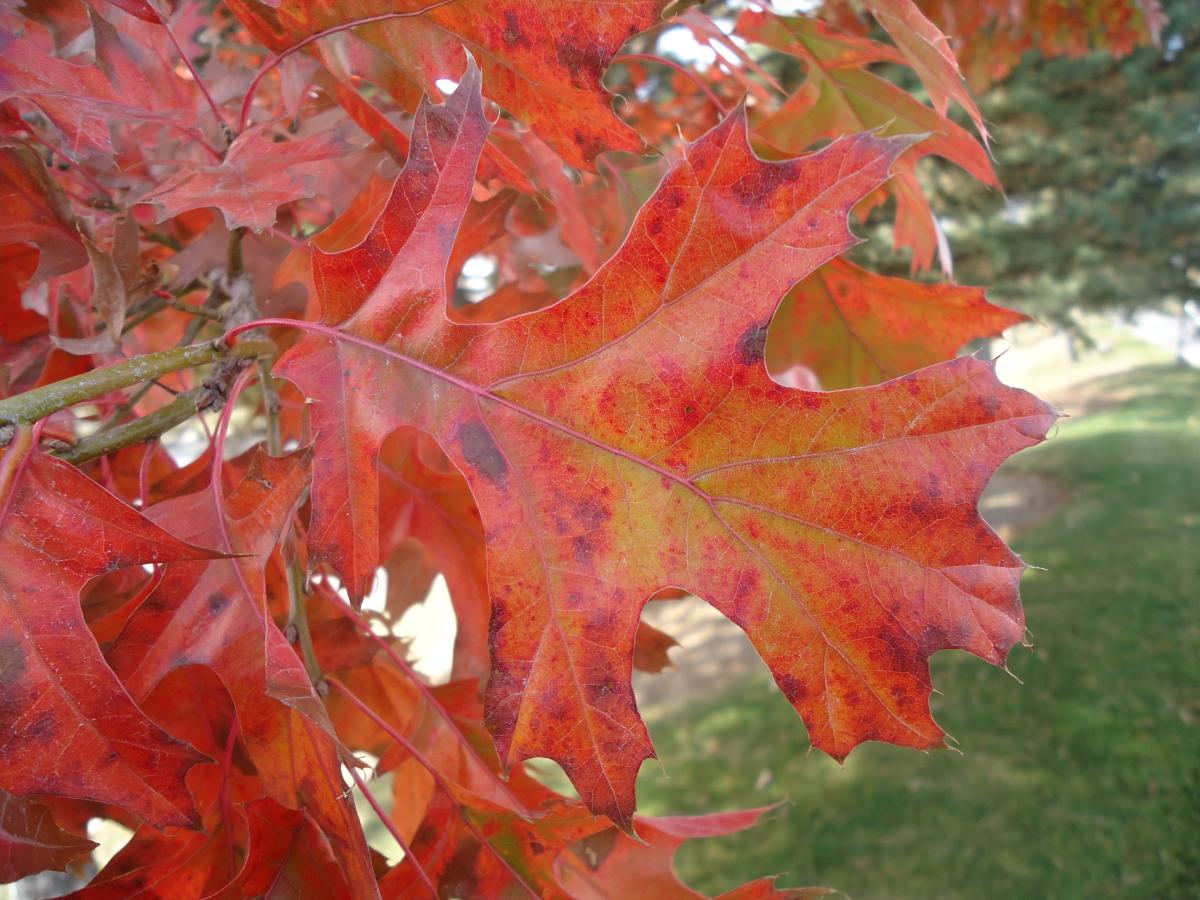
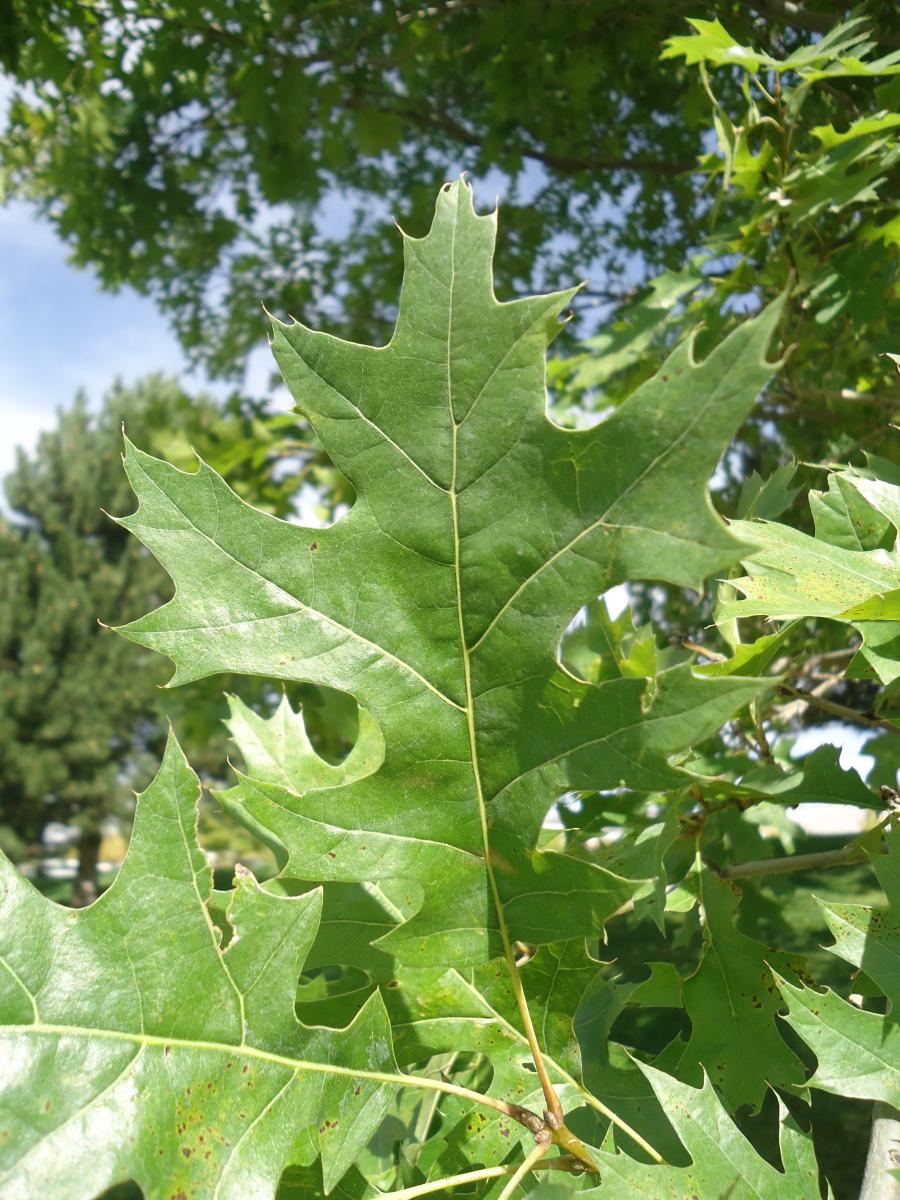
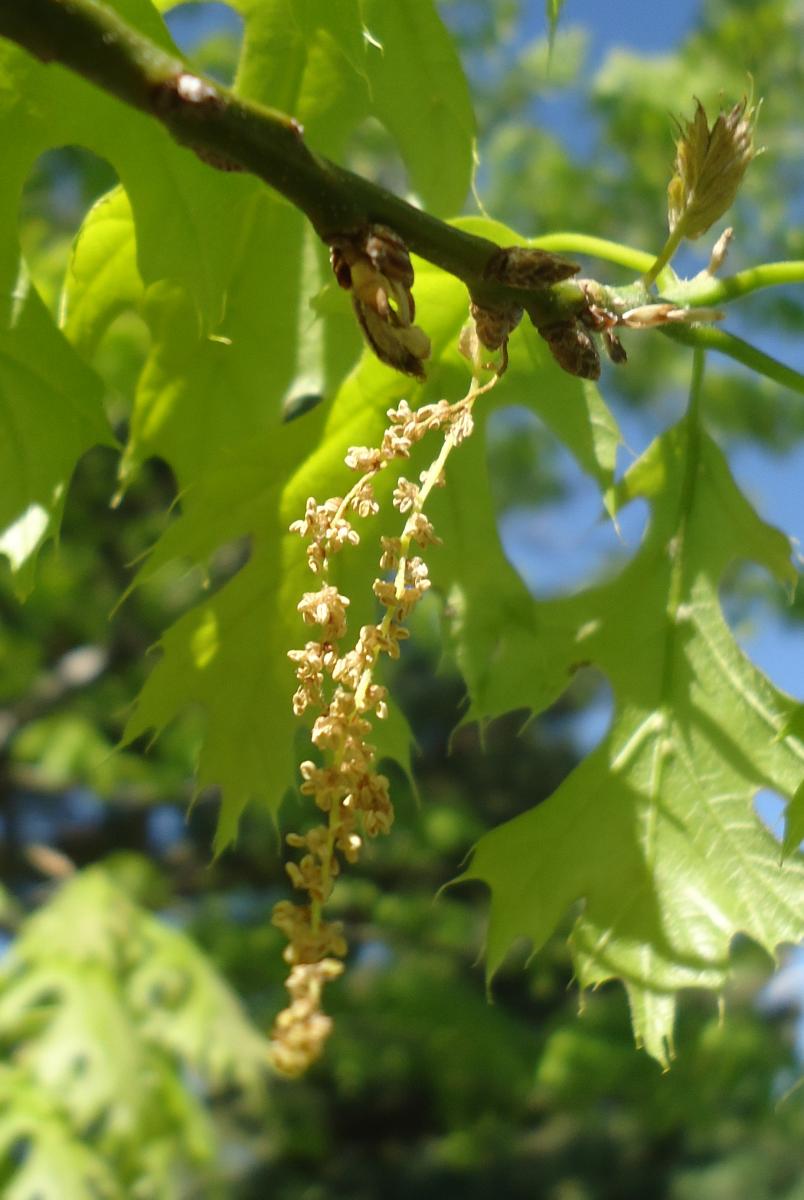
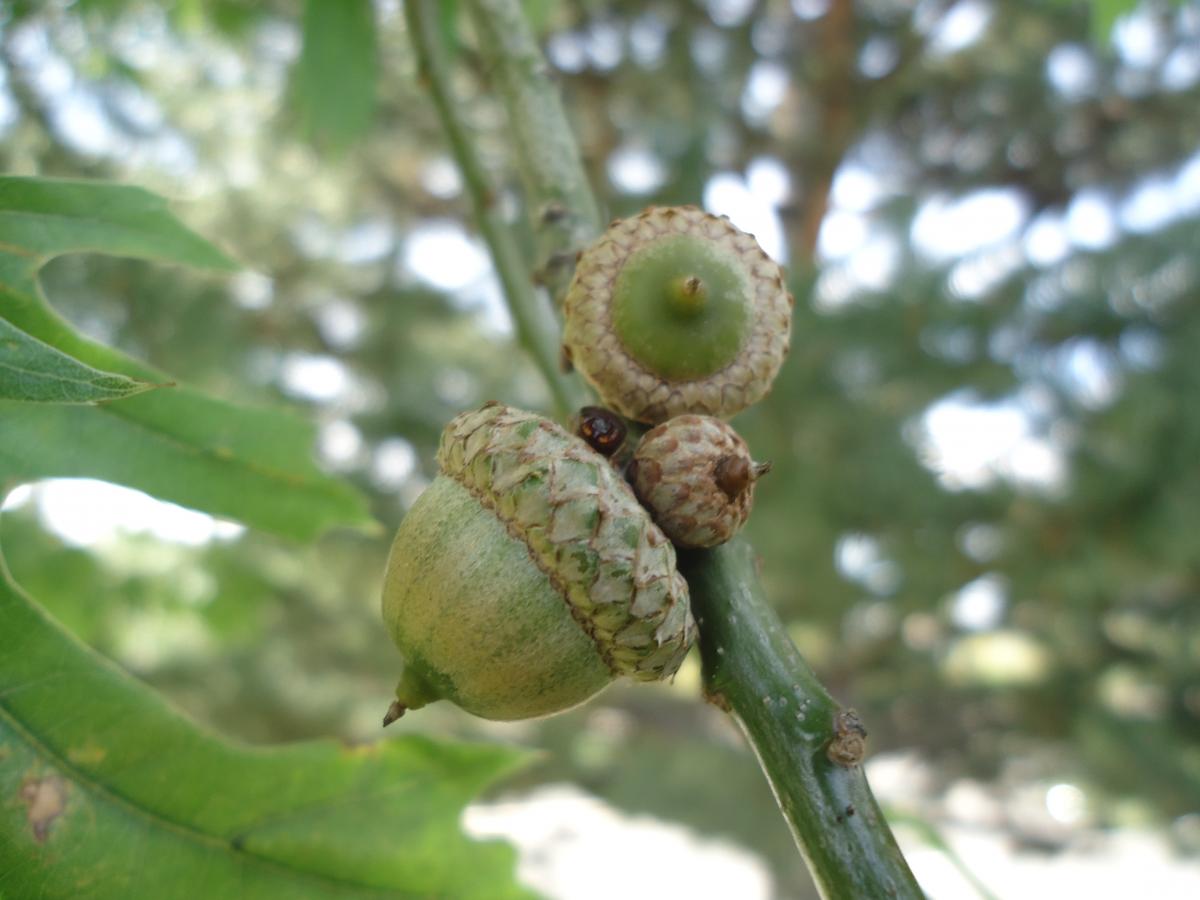
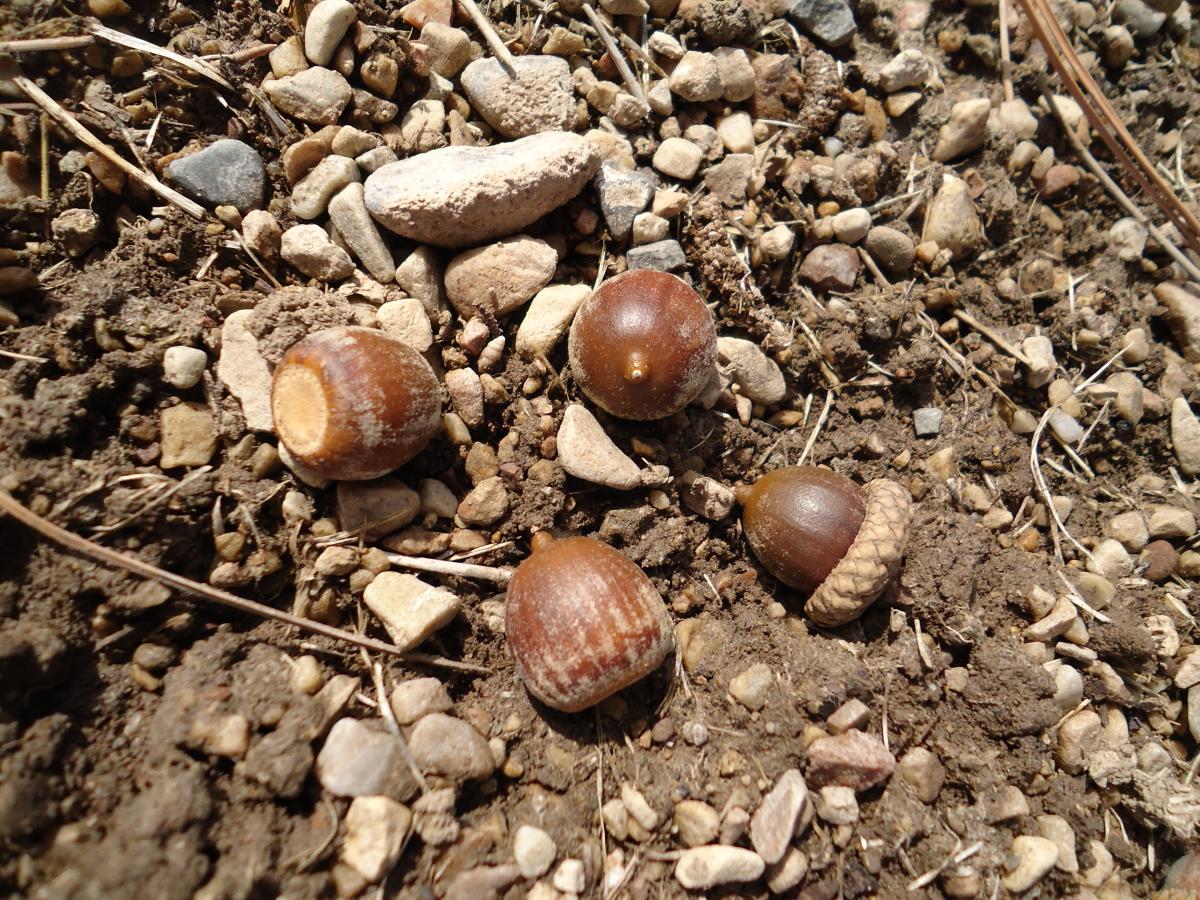
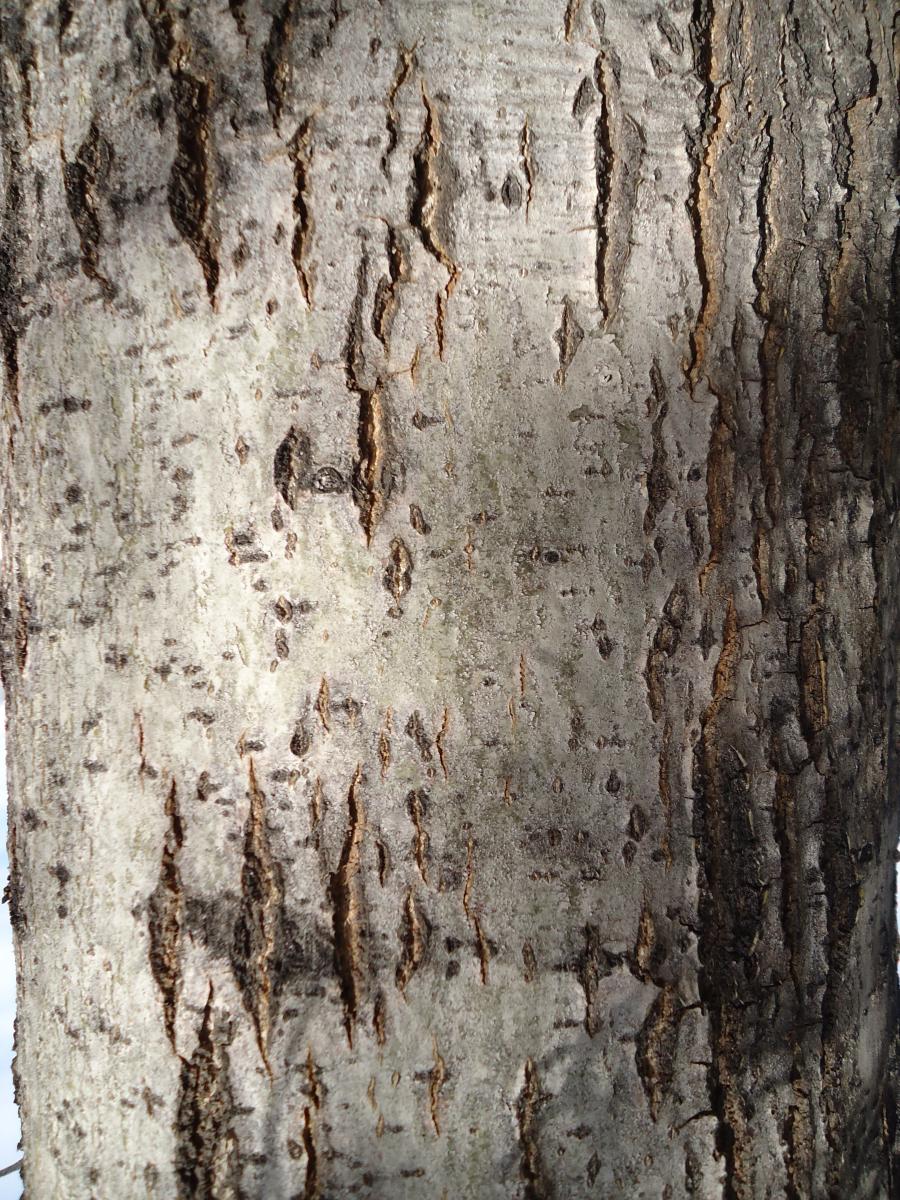
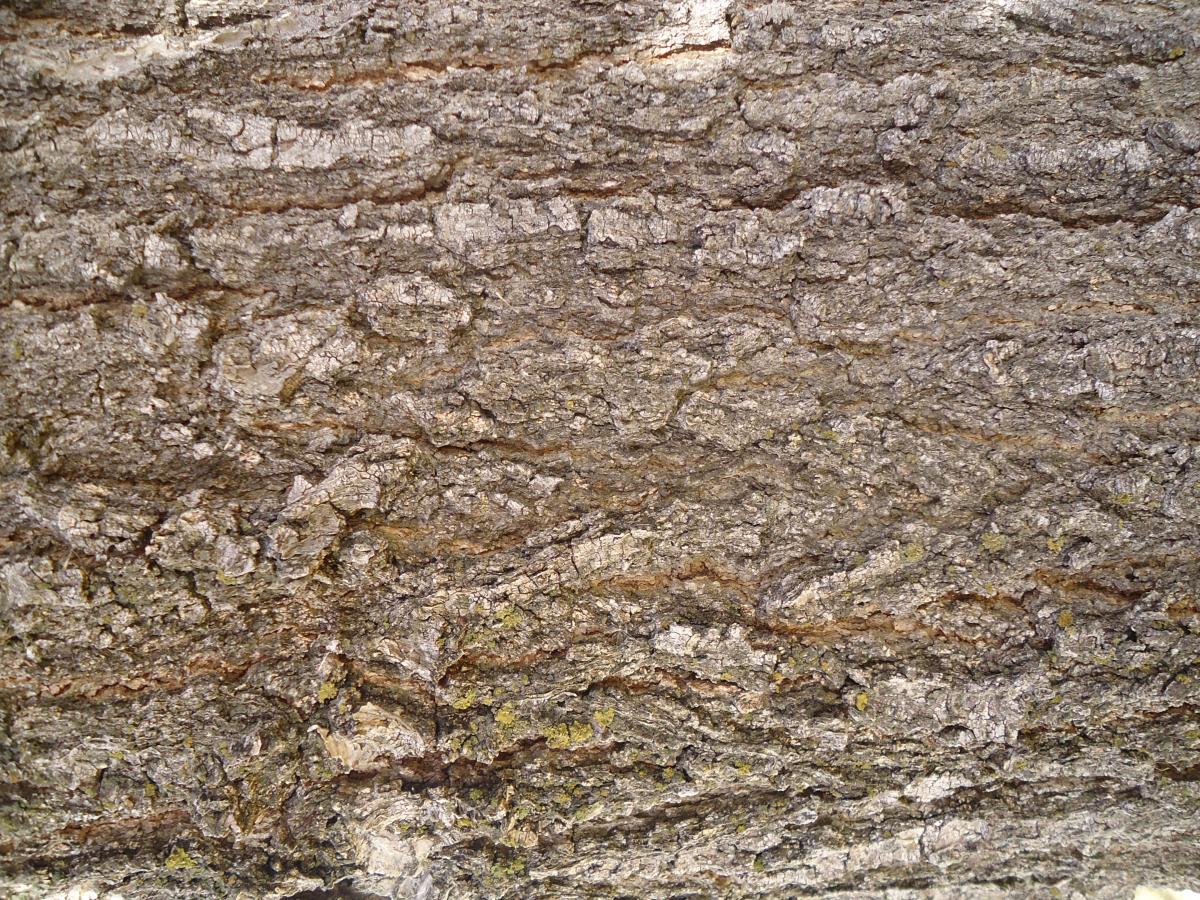
Quercus rubra
Leaves: Deciduous. The leaves are 5 to 8 inches long, 4 to 5 inches wide with 7 to 9 sharp pointed lobes. They are dark green above, paler beneath in summer with exceptional fall colors from red-orange to deep red.
Bark/Twigs: Smoother and gray on young stems eventually turning brownish gray to nearly black with shallow ridges. Has characteristic shiny stripes down the center of its bark ridges.
Flowers/Fruit: The acorns are red-ish brown and 1 inch long with a pointed knob on the end. The cap is shallow, only covering the base or up to ¼ of the acorn and is relatively smooth. Acorns take over a year to mature, typically 18 to 20 months. Seeds need a minimum of three months of temperatures below 40 degrees to germinate.
Mature size and shape: Large. 60 to 80 feet high. Has a large oval shaped canopy and good branching structure.
General information/special features: Plant in full sun. Can handle some shade. Is more tolerant of alkaline soils than some of the others in the red oak group such as pin oak but are still prone to iron chlorosis. Not particularly drought tolerant. Can live up to 500 years in ideal conditions. Red oaks are one of the most important oaks for timber production.
Landscape use and maintenance: Slow to medium growing rate. Claimed to be the fastest growing oak. Average maintenance. Good shade tree, usually planted as a specimen.
USDA Hardiness Zone: 3 to 8
Family/Origin: Fagaceae - Beech and Oak. Native throughout most of eastern North America, from Canada to the south.
Campus Use: Uncommon. Can be found along the sidewalk northwest of the Union Building (Bld 53).
